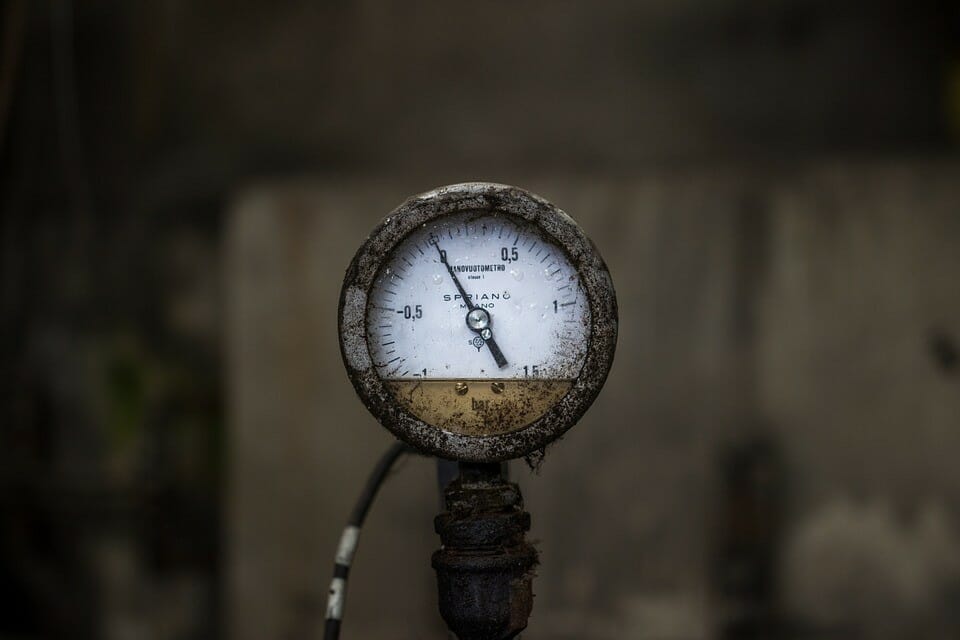When we think of the world’s most dangerous places, our minds often drift to treacherous mountain ranges or dense jungles, yet lurking beneath the surface of tranquil lakes and seemingly serene oceans lies an alarming truth: some bodies of water are far deadlier than they appear. From perilous currents and venomous creatures to hidden whirlpools and toxic depths, these aquatic killers have claimed countless lives throughout history. This exploration will delve into 17 of the deadliest bodies of water globally, revealing their ominous characteristics and the haunting tales surrounding them.
As you wade through this watery graveyard of danger, prepare to discover how even a leisurely dip can turn fatal in a heartbeat. Whether it’s the chilling allure of an exotic beach or the deceptive calmness of an inland lake, each body of water holds its sinister secrets, waiting to ensnare unsuspecting victims. Join us as we navigate nature’s most lethal liquid landscapes, where beauty masks brutality and survival becomes a remarkable feat against overwhelming odds.
1. Boiling Lake, Dominica
Boiling Lake in Dominica is not just another stunning natural wonder; it ranks among the deadliest bodies of water due to its unique geological features. Nestled within the Morne Trois Pitons National Park, this spectacular lake, often shrouded in surreal mist, is heated by volcanic gases escaping from deep beneath the Earth’s crust. Temperatures can soar to an astonishing 90 degrees Celsius (194 degrees Fahrenheit), creating a lethal environment where few creatures dare to thrive. Yet, this very volatility paints a picture of nature’s raw power—a mesmerizing and dangerous beauty that beckons adventurous souls.

Despite its perilous conditions, Boiling Lake reminds us of our planet’s dynamic processes. The lake forms part of an ongoing geothermal system closely resembling Mars, fueling scientific interest in understanding volcanic activity on other planets. Travelers who brave the trek through lush rainforests are rewarded with more than just breathtaking vistas; they witness one of Earth’s direct lines to its molten core—an awe-inspiring glimpse into what lies beneath our feet. So, while many may marvel at its allure, those who approach must also respect its fierce temperament; therein lies the danger and enchantment that make Boiling Lake a vital piece of our planet’s tapestry.
2. Jacob’s Well, Texas
Jacob’s Well in Texas is an alluring yet treacherous gem for adventurous divers, often cited among the deadliest bodies of water. This natural spring has a deep underwater cavern that plummets approximately 140 feet below the surface; most divers feel compelled to explore its enticing depths but quickly discover that beauty can disguise peril. Jacob’s Well challenges even seasoned adventurers with narrow passages and sudden drops. The underwater environment is laden with hazards such as rapid currents and low visibility, creating a façade of safety that belies its true nature.
Beyond the physical dangers lies a psychological element—the thrill of diving into an enigma. This unique interplay between fascination and fear draws divers from afar, many hoping to uncover its mysteries or at least capture breathtaking photos of its azure waters. However, statistics paint a stark reality: several have succumbed to the well’s deceptive allure over the decades. Whether it is due to equipment failure, disorientation within the submerged maze, or inadequate experience, these tragic tales serve as grim reminders of nature’s unpredictable force—a testament to Jacob’s Well being not just another dive site but perhaps one of existence’s most sobering experiences for those who seek adventure without heeding warning signs.
3. Lake Karachay, Russia
Lake Karachay, situated in the shadow of the Ural Mountains, is infamous for its staggering levels of radioactivity. Labeled one of the deadliest bodies of water on Earth, it has become a symbol of environmental catastrophe and a chilling reminder of mankind’s careless handling of nature. Just standing near its shores for even a brief hour can expose visitors to lethal doses of radiation—the kind associated with nuclear accidents. This haunting lake represents the aftermath of decades spent as a dumping ground for radioactive waste from nearby military and industrial facilities.
The surreal sight of Lake Karachay belies its danger; placid waters glistening under sunlight mask an insidious threat lurking beneath. As wildlife and plant life have completely vanished from its periphery, this contaminated body starkly illustrates ecological devastation—one where human greed and negligence prevail over natural beauty. Despite efforts by scientists to understand the extent of its contamination, many data points remain shrouded in secrecy due to military ties, leaving both locals and environmentalists alike bewildered by how such a beautiful landscape turned into one fraught with peril. For those intrigued by nature’s darker side, Lake Karachay is more than just an ominous tourist destination; it’s emblematic of urgent calls for greater accountability in our stewardship over planet Earth.
4. Bolton Strid, River Wharfe
The Bolton Strid, a seemingly tranquil stretch of the River Wharfe, conceals an ominous reputation as one of the deadliest bodies of water in the world. Just a few yards wide at its most narrow point, this deceptive river appears innocent enough at first glance. However, beneath its surface lie fierce currents and treacherous undercurrents that have claimed countless lives over the centuries. Local folklore is steeped in tales of adventurers and unsuspecting individuals who dared to enter its depths—only to vanish without a trace.
What makes the Bolton Strid particularly fascinating is its lethal characteristics and the contrast it presents against its picturesque backdrop near an ancient abbey. The juxtaposition of serene beauty with hidden danger prompts reflection on nature’s duality; it serves as both a sanctuary and a reminder of our vulnerability against powerful forces. As whispers of ghostly spirits linger around this enigmatic site, many are drawn by curiosity yet warned by legends that echo throughout time: Nobody who ever entered has come out alive. Such stories invite exploration into humanity’s complex relationship with nature—a blend of reverence and caution for wild places that offer both awe and peril in equal measure.
5. Daintree River
The Daintree River, the southern boundary of the ancient Daintree Rainforest, is a stunning yet treacherous waterway that conceals both beauty and danger. Beneath its glistening surface lurks an array of crocodiles that are not just awe-inspiring in size but also remarkably swift, making them some of the most formidable predators in one of Earth’s deadliest bodies of water. Kayaking or boating on this river presents a unique thrill—each ripple could conceal a lurking giant ready to spring into action.
Visitors often find themselves captivated by the striking contrast of serene landscapes and lurking crocodilian dangers. The riverbanks are adorned with lush mangroves, attracting wildlife such as bird species only found in this ecological treasure chest. However, amidst this picturesque setting lies an undeniable tension; it’s a constant reminder that each splash could signal the presence of these magnificent reptiles. Adventurous souls seeking immersion in nature must navigate this tricky balance between thrill and caution, understanding that while they’re drawn to explore, they share this pristine environment with apex hunters deftly adapted for survival.
6. Lake Kivu, West Rwanda
Lake Kivu, nestled between Rwanda and the Democratic Republic of Congo, is renowned for its breathtaking views and tranquil ambiance—it’s also classified as one of the deadliest bodies of water on Earth. At first glance, this serene lake might seem like a picturesque retreat; however, beneath its surface lies a volatile cocktail of gases. The lake is loaded with carbon dioxide and methane trapped in its depths due to volcanic activity. Should a disturbance occur, these gases could rapidly bubble to the surface in a catastrophic release, endangering both aquatic life and nearby communities.
This haunting potential for an explosive outburst adds layers to Lake Kivu’s allure. While most visitors come to enjoy kayaking or the lush landscapes that surround its shores, scientists continue their urgent studies on how best to manage and mitigate risks associated with this natural phenomenon. Innovative projects are underway to extract methane safely; this not only helps reduce pressure but also provides a sustainable energy source for local populations. As you stand by the shimmering water’s edge, it’s impossible not to feel a mixture of awe and trepidation: here lies nature’s beauty alongside an ever-present reminder of its unpredictable power.
7. The Bermuda Triangle
The Bermuda Triangle, often dubbed one of our planet’s deadliest bodies of water, is a realm where reality meets myth in a captivating dance of intrigue and fear. Over the decades, countless stories of vanished ships and missing aircraft have transformed this region into an enigma that grips the imagination. While skeptics attribute these disappearances to natural phenomena—like sudden storms or magnetic anomalies—believers ponder deeper mysteries that straddle the line between science and the supernatural.
Emerging research suggests that underwater geological formations could be pivotal in anchoring this area’s notorious reputation. Methane hydrate eruptions from ocean floors might create explosive bubbles capable of sinking large vessels almost instantaneously, while rogue waves as high as 100 feet can seemingly appear out of nowhere to capsize ships that dare traverse these waters. This blend of scientific inquiry with centuries-old folklore makes the Bermuda Triangle an area saturated in mystery and a focal point for discussions about human curiosity facing nature’s unpredictable whims. As we explore its depths and unravel its secrets, perhaps the triangle beckons us to reexamine our notions of danger and discovery within our world’s vast oceans.
8. Great Blue Hole, Belize
The Great Blue Hole in Belize, often celebrated for its stunning azure depths and vibrant marine life, harbors a more sinister side within its mysterious waters. This UNESCO World Heritage site is not just a diver’s paradise; it’s also part of the world’s deadliest bodies of water due to toxic sulfide layers accumulating at greater depths. These hazardous zones present an alarming reality for those adventurous enough to explore beneath the surface, where the beautiful blue transitions into an abyss filled with unseen dangers.
As divers descend into this world-renowned sinkhole, they encounter breathtaking stalactites and ancient formations that tell tales of a prehistoric past. Yet beyond this visual marvel lies a cautionary narrative. Oxygen-depleted environments and increasing levels of hydrogen sulfide pose real threats, reminding explorers that nature’s allure can often mask perilous truths. Understanding these dynamics enhances our appreciation of such geological wonders and underscores the vital need for sustainable exploration practices that safeguard our health and the fragile ecosystems below. Indeed, while diving into the Great Blue Hole may be exhilarating, awareness of its hidden hazards enriches our relationship with one of nature’s most intriguing yet daunting creations.
9. Lake Kivu
Lake Kivu, perched on the borders of Rwanda and the Democratic Republic of Congo, is a masterpiece born from tectonic fury. Nestled within the Great Rift Valley, its serene surface belies incredible geological activity beneath. Unlike typical lakes where gases escape harmlessly into the atmosphere, Kivu is unique due to its stratified layers that trap deadly methane and carbon dioxide at significant depths. This captivity creates a paradox: while it sparkles invitingly under the sun, it also stands as one of Earth’s deadliest bodies of water.
Exploring Lake Kivu offers stunning vistas and an opportunity to reflect on nature’s duality; here lies beauty entwined with potential peril. Fishermen cast their nets against a backdrop that holds whispers of danger—an eruption could unleash lethal gases into surrounding communities without warning. Yet scientists view this lake as more than a volatile landscape; they consider innovative ways to harness its methane for energy while ensuring local safety. In this way, Lake Kivu serves as a lesson in geological power and an inspiration for sustainable development within fragile ecosystems.
10. Blue Hole
The Blue Hole in the Red Sea stands as a breathtaking yet treacherous marvel, often dubbed one of the deadliest bodies of water on the planet. Plunging 400 feet down, this enchanting sinkhole has lured countless divers with its stunning blue hues and rich marine life. However, beneath its alluring surface lies a hidden danger—a tunnel connecting the depths of this sinkhole to the open sea. The allure can easily lead unprepared divers into a disorienting abyss where depth perception is distorted, and panic can set swiftly.
What makes the Blue Hole particularly hazardous is its depth and how quickly divers can become entranced by their surroundings. Many underestimate their limits or misjudge their ascent rates, which can result in severe consequences such as decompression sickness or even drowning. Stories abound of seasoned divers who entered feeling confident yet never resurfaced; each tale adds to the mystique and danger surrounding this iconic site. Despite extensive safety measures implemented by local guides, divers must remain vigilant—understanding their capabilities and the perilous beauty lurking beneath those shimmering waves is key to unlocking what may be an unforgettable experience rather than a tragic one.
11. Lake Natron, Tanzania
Lake Natron in Tanzania is often cited among the deadliest bodies of water on Earth, and for good reason. Its caustic waters, with a pH that can soar above 12, are not just inhospitable to most life forms; they create an eerie landscape reflecting striking red and orange hues under the African sun. This surreal phenomenon is due primarily to the salt-loving microorganisms called halophiles, which thrive in extreme conditions. Its breathtaking algae blooms might draw visitors but should remain vigilant—the lake’s high alkalinity can burn skin and eyes upon contact.
Yet, there’s more to Lake Natron than its perilous nature. It is a crucial breeding ground for flamingos, providing them with essential minerals in its saline crusts. During certain times of the year, thousands of these graceful birds flock to the shores, contrasting starkly against the vivid backdrop. Moreover, local communities rely on this unique ecosystem; even though most life avoids its depths, they have adapted practices around harvesting salt and utilizing geothermal activity nearby. In this paradoxical relationship between beauty and danger lies an extraordinary story: one where nature’s extremes carve out survival strategies that are as fascinating as unforgiving.
12. Shark Alley
Shark Alley, a breathtaking stretch of ocean nestled just a two-and-a-bit hour drive from Cape Town, is both mesmerizing and daunting. Often dubbed one of the deadliest bodies of water on the planet, this channel teems with the largest population of great white sharks known to man. These apex predators gather here not only for their primary diet—seals—but also because this region serves as an extraordinary breeding ground for marine life. The dance between predator and prey unfolds in real time, providing an unparalleled spectacle for those lucky enough to witness it.
For thrill-seekers and wildlife enthusiasts alike, Shark Alley offers more than just adrenaline-pumping shark cage dives; it’s an opportunity to glimpse the intricate tapestry of marine ecosystems at work. Researchers suggest that observing these majestic creatures in their natural habitat enhances our understanding of ocean health, as sharks play a critical role in maintaining balance within their environments. Despite its reputation as a death zone for ambitious seals, Shark Alley invites visitors to appreciate these feared giants’ vital role within their watery realm—a reminder that beauty often dwells amidst danger.
13. Drake Passage
The Drake Passage, often dubbed one of the deadliest bodies of water in the world, serves as a vital connection between South America and Antarctica. Stretching approximately 600 miles, this infamous stretch is renowned for its tumultuous seas and unpredictable weather patterns. Here, the Southern Ocean’s cold waters collide with the Atlantic’s warmer currents, creating vicious whirlpools and towering waves that can reach heights of up to 30 feet. Travelers navigating these waters contend with nature’s fury and witness an extraordinary biodiversity that flourishes in such extremes.
What sets the Drake Passage apart is not only its perilous reputation but also its historical significance. Many legendary explorers have braved this treacherous route, making it a rite of passage for adventurers seeking to reach Antarctica’s icy shores. Modern-day ships equipped with advanced technology still challenge its volatility, yet even experienced mariners acknowledge that respecting its raw power is paramount. For many individuals crossing these waters today—whether on scientific missions or polar expeditions—the journey becomes a transformative experience that pays homage to nature’s beauty and brutality. In navigating this formidable frontier, one cannot help but feel a deep sense of awe for our planet’s most remote and enigmatic corners.
14. Amazon Basin
The Amazon Basin is often hailed as one of the deadliest bodies of water on the planet, a verdant labyrinth teeming with life—and lurking perils. Each ripple in its waters could signal a piranha’s flash of teeth, ready to strip flesh from bone in an insatiable feeding frenzy. While the infamous alligator silently stalks through the murky depths, waiting for anything that strays too close to sip up its brutal bite, other less-visible threats lurk within as well: Consider the electric eel, a creature capable of delivering shocking jolts strong enough to incapacitate an unsuspecting adventurer.
Venturing deeper into this aquatic wilderness reveals fascinating and formidable surprises. Parasites thrive here, transforming seemingly harmless fish into vessels of torment through their insidious life cycles. At the same time, leeches lie in wait beneath darkened water surfaces for unwary travelers to pass by. It’s not just about the predators with sharp fangs or lethal strikes; it’s also about understanding how nature has perfected a web of survival strategies showcasing beauty and brutality. Navigating these waters isn’t merely a physical journey; it’s an emotional challenge against ancient instincts that trigger our deepest fears—exemplifying that survival isn’t just about being predator or prey but maintaining balance amid chaos.
15. Lake Michigan
Lake Michigan, often lauded for its stunning vistas and beach towns, carries a darker reputation as the most fatal of the Great Lakes. With more than 800 reported drownings in recent decades, it stands out among other bodies of water not only for its size but also for its unpredictable nature. The lake’s depth and swift currents can catch even seasoned swimmers off guard, making it a treacherous environment that deserves respect.
Moreover, Lake Michigan is unique among the Great Lakes due to its expansive shoreline, which attracts millions each summer. However, this vast accessibility often leads to increased risk-taking behaviors by visitors who underestimate their limits. The convergence of busy beaches and unguarded waters creates a perfect storm for accidents; swimming just outside designated areas or during inclement weather can quickly become life-threatening. By understanding these hazards, we can better appreciate Lake Michigan’s inherent beauty while respecting it as one of America’s deadliest bodies of water.
16. Citarum River, West Java, Indonesia
The Citarum River, often labeled as one of the deadliest bodies of water in the world, epitomizes a tragic dichotomy. Once a lifeline for agriculture and communities in West Java, it now struggles under relentless pollution. Industrial waste pours into its banks daily; factories discharge toxic chemicals unchecked while surrounding villages contribute to an ever-growing mountain of plastic debris. This river’s plight is a stark reminder that nature’s patience has limits, prompting urgent discussions about environmental justice and sustainable practices in Indonesia.
Yet amid this ecological disaster lies resilience and potential for change. Local communities have taken action, rallying together to initiate cleanup programs despite facing daunting odds against entrenched industrial interests. Grassroots movements highlight how citizen engagement can shine a light on corporate accountability while fostering hope for regeneration. Innovative solutions are also emerging—bioremediation techniques using specialized plants or bacteria aim to detoxify riverbanks and restore aquatic life. The story of the Citarum River underscores not just a dire warning about industrial neglect but also offers inspiration for revitalization efforts that could transform tragedy into triumph.
17. Horseshoe Lake, California
Horseshoe Lake in California stands out not just for its picturesque views but also for being one of the deadliest bodies of water in the country. This seemingly serene lake, nestled near Mammoth Mountain, harbors a hidden menace: toxic hydrogen sulfide gas emitted from the decaying organic materials beneath its surface. Visitors often flock to admire its beauty; however, few know that standing too close can lead to dire consequences, including disorientation or loss of consciousness due to inhaling the noxious fumes.
The eerie nature of Horseshoe Lake doesn’t end with its toxicity. Surrounded by vibrant pine trees and striking mountain backdrops, it is a stark reminder of nature’s duality—breathtaking yet treacherous. The lake’s unusual chemical composition causes unique phenomena like tree die-off, where surrounding vegetation succumbs to root contamination from fluctuating water levels. As you explore this enigmatic destination, it beckons deep reflection on our relationship with nature: We can marvel at its beauty while simultaneously respecting the invisible dangers lurking below its tranquil surface.
Endnote: Deadliest Bodies of Water
In conclusion, the world’s deadliest bodies of water are stark reminders of nature’s unpredictable power and the importance of respect for these environments. Each location presents unique challenges that claim lives annually, from treacherous tides and hidden currents to extreme weather conditions. As we explore these perilous waters, it becomes crucial to prioritize safety measures and educate ourselves about the risks involved in recreational activities. Awareness can significantly reduce the number of tragedies associated with these locations, allowing people to enjoy their beauty without falling victim to their dangers. Let us approach our adventures with caution and reverence, fostering a healthy respect for both the allure and the risks of our planet’s magnificent yet hazardous waters.











